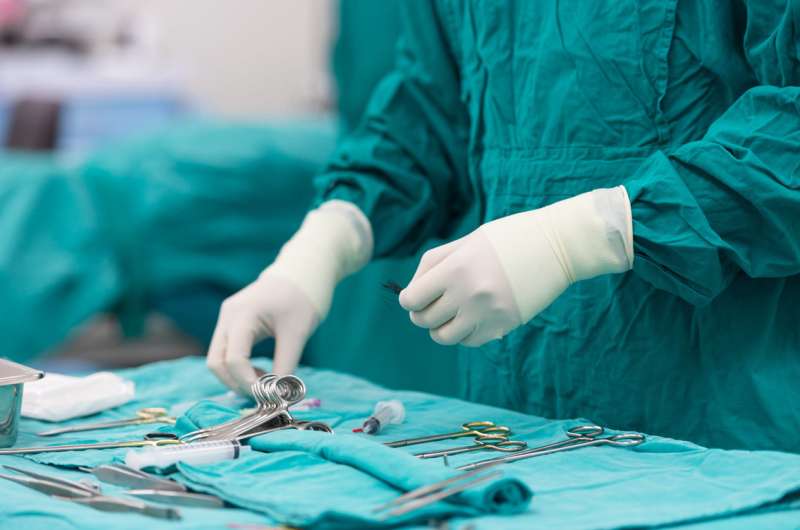Supermicrosurgery helps to combat lymphoedema following tumour removal

Lymphoedema is fluid retention in the tissue caused by damage to the lymphatic system and is one of the most serious side-effects of cancer operations. The problems caused by the swelling can range from severe pain or skin infections right through to loss of limb function and they detract greatly from a patient's quality of life. The conventional forms of treatment are only partially effective and the results temporary. Researchers at the Comprehensive Cancer Center (CCC) at MedUni Vienna/Vienna General Hospital are now refining two innovative techniques for the effective treatment of lymphoedema.
Surgical reconstruction of damaged lymph vessels is challenging, because they can be less than 0.7 mm in size and cannot be sutured using conventional methods. However, new developments in so-called supermicrosurgery mean that it is now possible to make surgical sutures measuring just 0.3 – 0.8 mm. This requires high-performance microscopes and the use of fluorescent liquid and fluorescence cameras.
Fine instruments and a steady hand
Against this background, two techniques have now been established for treating lymphoedema effectively: firstly, lymph channels that are still intact can be connected to adjacent veins by suturing them together. This means that the lymphatic fluid, which would otherwise permeate into the tissue, can be dissipated via the blood circulation.
Secondly, lymph nodes and their surrounding tissue can be removed from healthy parts of the body (groin, armpit, neck) and transplanted into the areas where lymph nodes have been removed or damaged as a result of cancer treatment. There they are not only able to absorb lymphatic fluid but also to release growth factors to stimulate the formation of new lymph vessels.
Thinner than a hair
Christine Radtke, Head of the Division of Plastic and Reconstructive Surgery at MedUni Vienna/Vienna General Hospital and expert in lymphatic surgery, is successfully using, researching and refining the technique in Vienna General Hospital. Says Christine Radtke: "These operations require a very experienced microsurgeon using specialised instruments and a modern, high-performance microscope. The suture material is thinner than a hair and the needle so fine that you cannot see it with the naked eye."
Operation worthwhile
In both techniques, which can be combined if required, the lymph channels are marked. This shows where the lymph channels run so that any breaks are clearly visible. Says Radtke: "These lymphatic surgery techniques are still relatively unknown, even in the specialist world. However the procedure is worthwhile, since patients describe immediate pain reduction and a significant improvement in their everyday life." In order to make these new techniques available to more patients, Radtke and her team are working hard to extend them and are conducting several trials.
Underestimated condition
According to estimates, approximately 200 million patients worldwide suffer from lymphoedema. It is assumed there are around 30,000 in Austria. A distinction is made between congenital (primary) lymphoedema and secondary lymphoedema, that is to say lymphoedema that starts during a person's life as a result of accidents, illnesses or inflammation.
Secondary lymphoedema is one of the commonest and most serious side effects of surgery and radiotherapy for breast and prostate cancer and also for sarcoma. During the course of treatment, lymph nodes and/or vessels are often removed or damaged by radiotherapy or chemotherapy. As a result, the lymphatic fluid can no longer be evacuated and therefore builds up in the tissue. Since some lymph vessels are less than 0.7 mm in diameter, it was hitherto impossible to reconstruct them surgically.
The standard conventional treatments for lymphoedema are lymphatic drainage, a massage that has to be performed up to twice a day, since its effect is short-lived, the wearing of compression bandages and liposuction. All these measures restrict a patient's everyday life, only help to a limited extent and do not prevent the recurrence of lymphoedema.




















